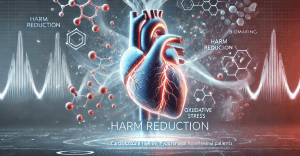The research team of CoEHAR conducted a bibliometric analysis on the top 100 most-cited articles about the use of quantitative light-induced fluorescence, a technology which exploits the auto-fluorescence of teeth to detect demineralization- The review aims to determine the impact of this technology and explore emerging trends.
Caries and other periodontal diseases represent a risk factor for oral health globally: detecting the onset of these lesions at an early stage is crucial for timely intervention and preventive measures to arrest or reverse the progression of decay.
Traditionally, the most commonly used method to assess the progression of these conditions is visual evaluation which, although effective, fails to detect early lesions or those located in less visible areas, especially in the proximal areas or on the smooth surfaces near the gum. However, in recent years, the emergence of new technologies, such as quantitative light-induced fluorescence, has revolutionized the field of detection and management of such pathologies, offering the advantage of providing quantitative measurements for the disparity in fluorescence radiance between healthy tooth structures and those affected by caries and allowing the detection of microscopic lesions.
“We conducted the first bibliometric review on the 100 most cited articles on the subject,” explains Giusy Rita Maria La Rosa, Department of Clinical and Experimental Medicine at the University of Catania and researcher at CoEHAR. “The studies included in the review involved 160 authors from 29 different countries and were published across 45 journals. The publication period ranges from 1999 to 2020. The data we collected will provide the basis for a critical evaluation by doctors and researchers, promoting advancements in the management and treatment of widespread dental diseases such as caries“.
Here are several outcomes that emerged from this innovative review:
- JOURNALS AND IMPACT FACTORS: Caries Research emerged as the top contributing journal (10 numbers of article), followed by Journal of Dentistry and Acta Odontologica Scandinavica (n = 8, each), American Journal of Orthodontics and Dentofacial Orthopedics and European Journal of Oral Sciences (n=6, each), European Journal of Orthodontics (n=5) and Photodiagnosis and Photodynamic Therapy (n=4). Collectively, these journals contributed to 47% of the top-cited articles in QLF in caries research. The top five articles have received more than 100 citations each.
- AUTHORS: Pretty IA was the most prolific author (18%).
- COUNTRY REGION, AFFILIATIONS: The most 100 influential articles on QLF technology in caries research presented contributions from 24 countries. Europe hosted 94 of the 100 most-cited papers and, thus, had the highest number of citations (n=1875). United Kingdom had the highest number of most-cited papers (32%), followed by Netherlands and USA (20 % each). Laboratory studies constituted the predominant study design (45%), followed by randomized clinical trials (20%) and non-systematic reviews (11%).
- STUDY DESIGN: The predominant study design was laboratory study (n =45), followed by randomized clinical trial (n = 20) and non-systematic review (n = 11), collectively representing 76% of all articles reviewed.
“The use of technologies in caries diagnosis, which provide visual input through images, can increase patient awareness of the extent of the damage and may increase the acceptability of home or professional treatments. The same technologies, based on an objective and reproducible assessment of tissue damage, are useful for both physicians and researchers to monitor lesions and make decisions based on verifiable and solid data”.




